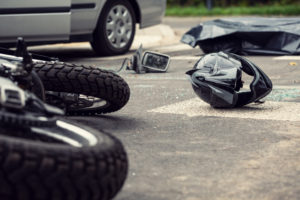Imagine that you and your family are watching a football game in your living room. All of a sudden there is a loud noise – as if a helicopter is landing on your roof.
Your home shakes vigorously, pictures fall from the walls, the kitchen cabinets lose their dishes and crash on the now cracking tile floor. Your water pipes burst turning your basement into an unintended indoor pool, and the stones facing your two-story fireplace and chimney dislodge and cascade downward onto your lap. You scream, “What the f#*%?!”
After rushing to the emergency room for treatment of your leg injuries, you hear the news that you just suffered through an earthquake measuring more than 5.6 in magnitude. All of the news reports confirm the earthquake was the largest ever experienced in your home state. Now, stop imagining, because all these things actually happened to residents of Prague, Oklahoma, in November of 2011.
It was just after Oklahoma State beat Kansas State in a football game held in Boone Pickens Stadium in Stillwater, Oklahoma, that an earthquake hit about 60 miles away near Prague. Mrs. Sandra Ladra was sitting in her living room’s recliner and had been watching the game when the largest quake to ever hit Oklahoma struck causing the home and Mrs. Ladra substantial damages and injuries. While Mrs. Ladra may have been the only resident that suffered personal injuries, many homes have large cracks in their foundations, brick walls and chimneys that have broken away and fallen to the ground, fallen brick and stone supports, and of course, wracked doors and windows, cracked walls and ceilings, nail pops, and brick and mortar cracks in walls and fireplaces.
In addition to Mrs. Ladra’s personal injuries and homes being damaged around Prague, St. Gregory’s University in Shawnee also suffered tremendous damage. The university’s iconic Benedictine Hall, which four turrets were destroyed by the quakes, received enough donations allowing it to reconstruct the turrets forming the basis of St. Gregory’s logo. But most homeowners in and around Prague still live in ruins, because many never thought they needed earthquake insurance and don’t have enough money to fix their homes themselves. Even more problematic is that several homeowners have modest-valued homes that would cost more to repair than they are even worth.
Oklahoma’s leading industry, oil and gas production, continues to blame Mother Nature and says that Oklahoma’s shakes are just as natural as its tornadoes. But scientists disagree, and instead lay blame on the industry’s disposal of fracking fluids and wastewater, a byproduct of the hydraulic fracturing process to mine natural gas.
The industry uses wells to pump fracking waste deep into the earth under pressure in order to dispose it. These wells are commonly known as injection or disposal wells.
Neither drilling for oil or natural gas, or even fracking, causes earthquakes. So when industry execs repeat that mantra, it’s true.
But it’s a half-truth.
For more than half a century, scientists have linked injection wells to earthquakes. In other words, there are such things as man-made earthquakes, and they are caused by the oil and gas industry.
Over the past four years state and federal geologists have counted 5,418 earthquakes in Oklahoma. A record 567 of those quakes registered magnitude-3 or greater. In comparison, U.S. Geological Survey data reflect that Oklahoma experienced an average of fewer than two magnitude-3 earthquakes per year for 30 years, from 1978 through 2008. At least 19 peer-reviewed published seismicity reports have concluded that many of the quakes occurring in Oklahoma are man-made, triggered by literally billions of gallons of fracking waste injected into disposal wells.
Scientists have also linked the 2011 Guy-Greenbrier Earthquake Swarm in Arkansas to injection wells. Arkansas’ oil and gas commission halted the culprit wells and created a moratorium area around the fault forbidding further operation of wastewater disposal wells. Similar links between injection wells and earthquakes have also been made in areas around Dallas, Texas













3 Comments
Earl W. Barnett
I live 7 miles south of Guthrie, OK and over the last year we have had many earthquakes in our area. I truly believe that the deep injection wells are the cause of the earthquakes. All you have to do is look at the areas earthquake area of interest and where the deep disposal wells are located.
Scott Poynter
Thanks for the comment Earl. When we filed our case originally it seemed the public was against us. It seems, and please tell me if I'm wrong, the people in Oklahoma are starting to sway toward our point of view.
Sister Kimberly Prohaska OSB
Scott
Thanks for posting this!
We the sisters of St. Scholastica Monastery have been trying to educate and help fight against the issues of FRACKING in our country, especially Arkansas. We have been working with various organizations to realize the destruction that is happening in the name of fuel and funding. We have held evening sessions about FRACKING and we invite you and anyone who wants to know more about the issues, effects of fracking.
Comments for this article are closed.